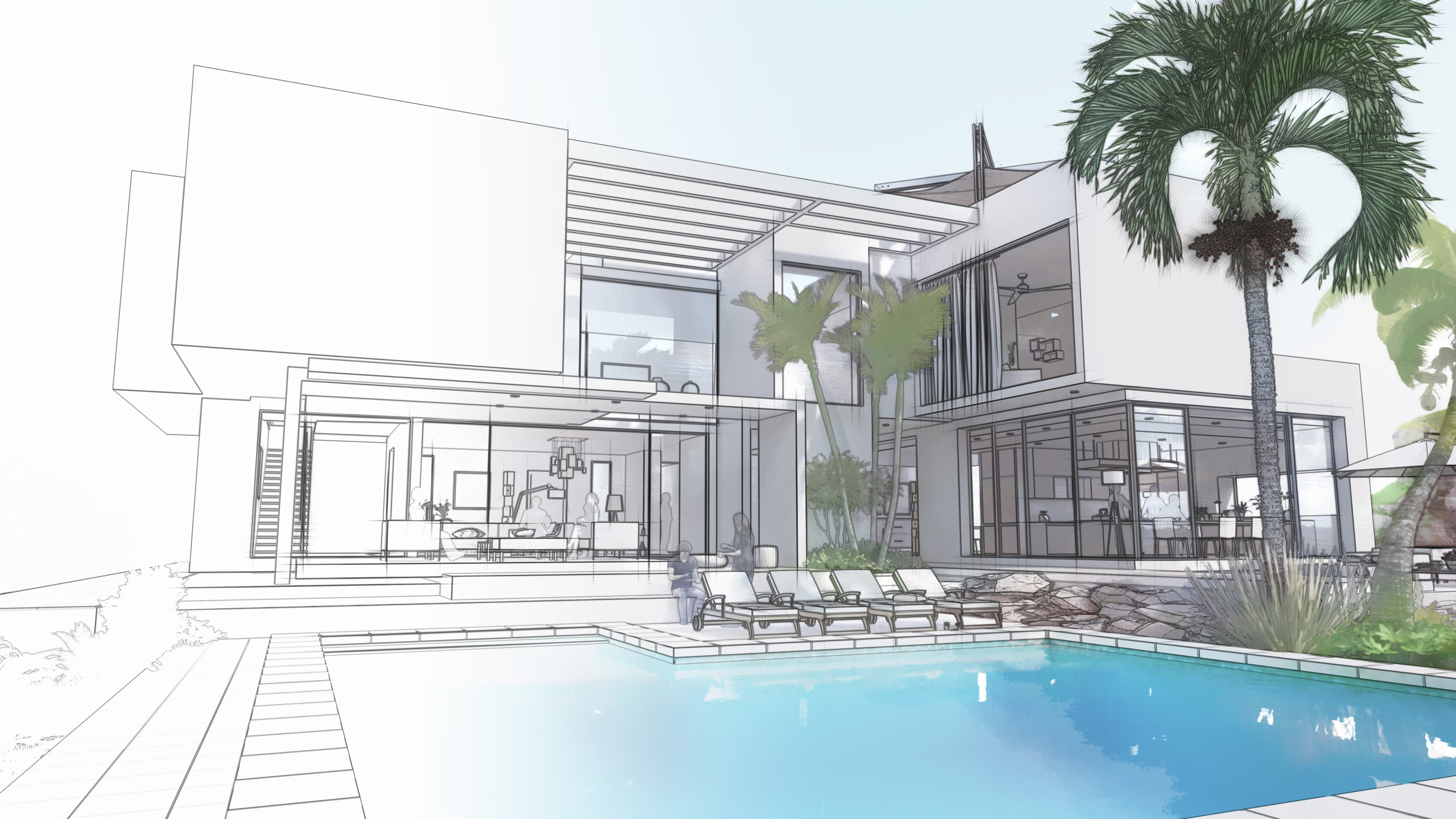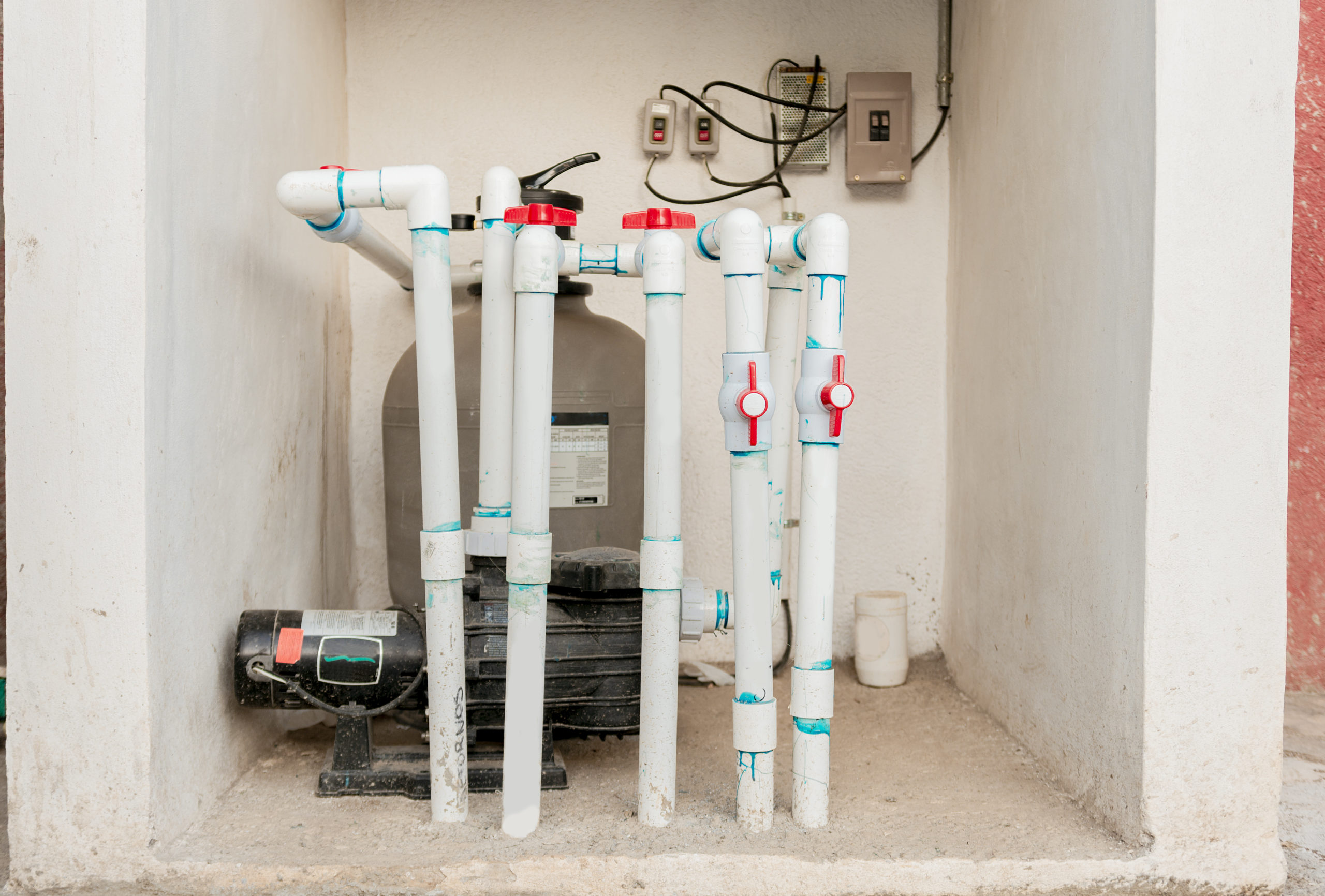You’re ready to add that dream pool to your backyard, but where do you start? This article breaks down the process into manageable steps.
From planning and design to the final landscaping touches, we’ve got you covered. So don’t worry, by the end of this guide you’ll have a better understanding of what’s involved in building a pool.
Let’s dive in!
Defining the Pool Construction Process
You’ve got to understand that the pool construction process is more complex than you might think. It’s not merely about digging a hole and filling it with water. Instead, it involves meticulous planning, understanding pool regulations, and selecting appropriate construction materials.
Firstly, familiarizing yourself with local pool regulations is imperative. These guidelines dictate key factors such as depth, fencing requirements, and safety features to prevent mishaps. Ignoring them could lead to legal complications or even project shutdowns.

When it comes to construction materials, you’re presented with a variety of options like concrete, vinyl liner or fiberglass. Your choice will be dictated by your budget constraints, maintenance willingness and aesthetic preferences. Concrete offers versatility in shape but requires regular upkeep; vinyl liners are cost-effective yet susceptible to punctures; fiberglass is durable but provides less flexibility in design.
Selecting the right material isn’t just about immediate appeal; it’s also about considering long-term durability and ease-of-maintenance. You want a pool that’ll stand up over time without becoming an ongoing headache.
All told, building a pool requires informed decisions at every step – from adhering to regulations through choosing the right construction materials.
Planning and Designing Your Dream Pool
Before anything else, you’ll need to carefully plan and design your dream pool to ensure it fits your needs and preferences. This process involves meticulous budgeting considerations and a sound understanding of pool maintenance.
In planning, you have two main areas to consider:
– Design Elements:
– Shape and Size: These will largely be dictated by the available space in your backyard. You should also take into account how you intend to use the pool.
– Materials: Consider durability, aesthetic appeal, and cost when choosing materials for your pool’s interior finish, decking, and other features.
– Financial Aspects:
– Budgeting Considerations: Pools can vary greatly in price depending on size, materials used, and custom features. It’s vital to establish a realistic budget that factors in both construction costs and ongoing expenses.
– Pool Maintenance: Don’t overlook the cost of maintaining your pool. Factor in routine cleaning tasks as well as periodic repairs or replacement of equipment.
Remember that a well-planned pool not only provides enjoyment but can also enhance the value of your property. With careful design choices and prudent financial planning, you’ll create an aquatic retreat that suits both your lifestyle requirements and budgetary constraints.
Excavation and Framing: The Start of Physical Construction
Once your plan’s solidified, it’s time to roll up your sleeves and start the physical construction with excavation and framing. This phase isn’t without its challenges.
You’ll encounter various excavation challenges such as unexpected soil conditions or hidden underground utilities. It’s crucial to approach this stage with caution, using careful, calculated movements to avoid any potential setbacks.
The framing process is no less demanding. Rely on proven framing techniques that cater to the shape and design of your pool. Your frame should be robust enough to withstand the pressure exerted by the concrete yet flexible enough to accommodate any design intricacies.
It’s essential that you’re meticulous when setting out your frames – this forms the skeleton of your future pool and dictates its final shape and size. Use string lines for accuracy and take into account elements like steps or benches in your design.
Installing the Plumbing and Electrical Systems
After the framing’s completed, it’s time to install the plumbing and electrical systems in your project. This phase requires precision, as these systems will power everything from filtration to lighting.
In terms of plumbing:
* Pay attention to waterproofing techniques. This ensures that water flows properly without causing damage.
* Use flexible PVC pipes for effective water flow.
* Seal all joints with solvent cement to prevent leaks.
As for electrical installation:
* Focus on energy efficiency.
* Install an automatic control system for optimal use of resources.
* Opt for energy efficient pumps, which can reduce electricity consumption by up to 70%.

Take note:
– Ensuring correct installation of both systems is vital. Poorly installed plumbing can lead to leaks while bad wiring may result in shorts or even fires.
– Always consult a professional if you’re unsure about any aspect of the process. They’ll have the necessary expertise and tools to ensure a successful and safe installation.
The Final Touches: Pool Finishing and Landscaping
Now that we’re nearing the end of our project, it’s time to focus on pool finishing and landscaping. Your choice in finishing materials selection can make or break the overall look of your pool. You’ve got options – plaster, tile, aggregate or even fiberglass. It’s essential to consider durability, maintenance needs, and cost when deciding.
Plaster is economical but requires more upkeep. Tiles are durable and offer a wide variety of design possibilities. Aggregate finishes comprise pebbles or glass beads for a textured look while fiberglass is low maintenance and quick to install.
Then comes landscape aesthetics integration – this marries your pool with its surroundings so it doesn’t stick out like a sore thumb. Think about how you’ll use the space around your pool. Will there be a sunbathing area? Perhaps an outdoor kitchen?
Opt for plants that won’t litter leaves into your new pool; choose paving materials that complement your home’s style; install lighting for nighttime swims – all these details will enhance your backyard oasis.
You’re nearly there! Soon you’ll enjoy the fruits of all this hard work: a well-integrated, aesthetically pleasing swimming pool that serves as both relaxing retreat and social hub.
Frequently Asked Questions
What Is the Average Cost of Maintaining a Pool Annually?
On average, you’ll spend around $1,200 to $1,800 per year on pool maintenance. This includes costs for pool chemicals and occasional repairs. Remember, maintaining your pool’s health is crucial to prevent costly damage later.
Are There Specific Permits Required to Build a Pool?
Yes, you’ll need specific permits to build a pool. The permit process varies based on local regulations. It’s crucial to understand and comply with these rules to ensure your pool project is legal and safe.
How Does Having a Pool Affect Home Insurance Costs?
Having a pool can increase your home insurance costs due to higher liability coverage. However, installing safety measures like fences or alarms might qualify you for insurance discounts, reducing that cost.
What Are Some Eco-Friendly Options for Pool Construction?
For an eco-friendly pool, you can consider solar heating systems. They’re energy-efficient and reduce carbon footprint. Also, look into natural filtration options that use plants instead of chemicals to keep your pool clean.
Can a Pool Be Built on a Sloped Backyard?
Yes, you can build a pool on a sloped backyard. You’ll need to employ slope stabilization techniques and consider inclined pool designs. It’s more challenging, but with the right planning, it’s certainly achievable.
